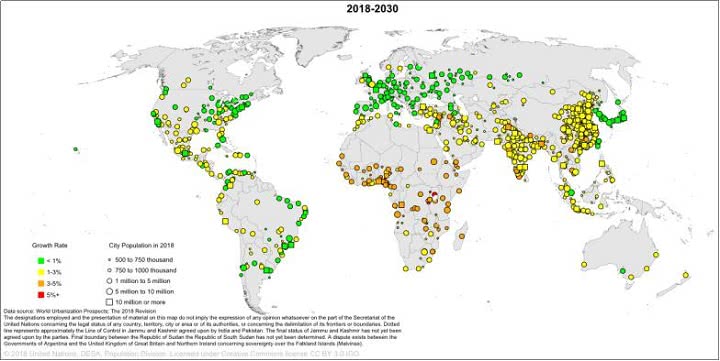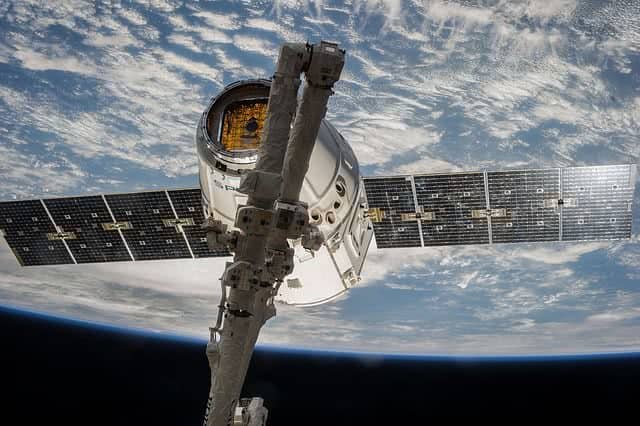Population Geography is the study of the demography from a geographical perspective. Population Geography helps to understand the various facets pertaining to the spatial variation in the distribution of the human population across the Earth with reference to the physical, cultural and socio-economic environment.
Post World War II there was increasing availability of population data which made it possible to map the demographic attributes with respect to the different regions of the world. In the twentieth century, there was a growing awareness among the people about the effects of population expansion on the economic development in a particular region. The larger part of the world population lives in the developing or the underdeveloped countries hence the greater contribution to the population came from these regions itself. With the onset of the industrial revolution and the rising economic instability, many developing and the underdeveloped countries began to experience a shift of the greater population from the rural to the urban areas. The settlement of the working class in the urban areas led to the formation of numerous cities which were without doubt accompanied by their uncountable problems which compelled geographers to focus their research into the many facets of population distribution.

Related: What is Urban Growth, Landmarks & Development of Town Planning process in India
According to John I. Clarke, Population geography is mainly the study of how spatial variation of a population and its various factors like composition, migration, and growth are related to the spatial variation in the nature of places (Clarke, 1972:2).
Wilbur Zelinsky defines it as “a science that deals with the ways in which geographic character of places is formed by and, in turn, reacts upon a set of population phenomena that vary within it through both space and time interacting one with another, and with numerous non-demographic phenomena” (Zelinsky, 1966).
There are three main aspects of the human population that Population geography revolves around:
- Population Dynamics: An analysis of the world population and its spatial manifestation including the trends in the past and present growth influenced by migration, fertility and mortality.
- Population composition and structure: This refers to qualities of a population which can be either physical qualities like age-sex structure, marital status, health etc or socio-economic qualities like religions, race or ethnicity, language, education, occupation, customs, and habits.
- Size and distribution: This includes the distribution of the population in the rural and urban areas.
Population Geography depends largely on the primary data from demography which indicates the geographic aspects of population change caused by migration and natural changes. Frequently field teams are used for the purpose of observation and investigation to study the physical aspects of a population like the form of residences which vary as per the spatial differences which also includes a study of the planning and engineering that goes into it.
The physical make up of the cities and rural settlements reflect the regional characteristics of a population. The location of a population or any settlement is determined by the geography and nature of production in the area. This is true for the territorial organization throughout the country and all the regions within it. The population density of an area is directly related to the economic function in the region. In fact, the population density of a region reflects the degree of economic development that has been achieved in the area. The location that has been established as the primary point of population, in turn, influences the production in the area. The natural environment’s influence on a population can be seen through the production. Due to this, the study of population involves an understanding of all the aspects that can influence life which includes, biology, economics, sociology, anthropology, medicines, mathematics, statistics etc.
Population Geography helps in the quantitative study of the structure, size, and characteristics of a population along with the spatial distribution in a region with an understanding of the changes that occur within them. The quantitative and qualitative study of a population helps in the assessment of labor resources that will ensure the availability of the most responsive settlement that will meet the requirements of production and the need for cultural and domestic help.
Study of population geography with a stress on the conditions of habitation in different environments helps to establish a connection with the medical geography of the region. It has been found that the ethnicity of a population and the economics of labor in that region have a deep relation with the population geography. The population in an area is determined by the social phenomena and needs to be considered while explaining the consequences and determinants of population phenomena.
Population geography plays an important role in the understanding of economic geography as people are the main component of the economy contributing from every possible sector. The location of the population has an all-encompassing significance in the productivity of the people and the consumption of the products. Hence the population is both the producer and consumer. The natural growth of the population and migration determine the distribution and the timely redistribution of the settlement. The growth or decline of the population is greatly influenced by the environmental and economic factors in the region. The systems and structures of the settlements are affected by the spatial nature of production and the geographical characteristics of the region.

With the advent of Geographical Information Systems (GIS) and the use of more sophisticated remote sensing technology, the study of Population geography has seen a change in the availability of information and its applications. The importance of the study of geography in the population studies has become prominent in all social sciences. This is apparent in the evolution of subfield called Spatial demography which is neither Demography nor population geography. It is the general understanding that demographers’ study more about the fertility of a population whereas population geographers mainly focus on the migration of a population depending on the geographical and economic aspects of a region. As R.J. Proyer very accurately suggested that population geography deals with the analysis and explanation of interrelationship between population phenomena and the geographical character of places as they both vary over space and time (Proyer, 1984:25).
Also Read: Population Explosion | Meaning, Reasons & Effects